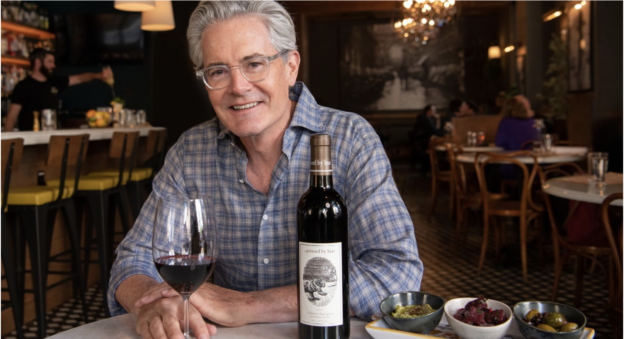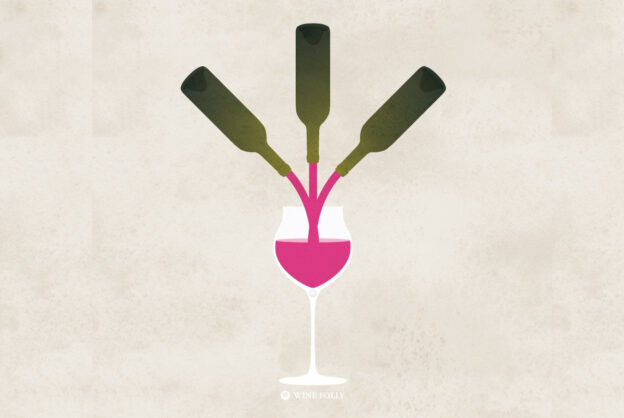These days it seems like every sports, television, film and music celebrity is trying to sell their own wine, tequila, gin, [fill in the blank alcohol]. It can be hard to know who is just slapping their name on a bottle for a marketing purposes, and who is actually hands-on involved in the creation of their product. It can be even harder to know which ones are actually worthwhile buying.
This would be a very long article indeed if I tried to cover every celebrity wine. I have tasted quite a few of celebrity wines, but of the ones I have tasted, there are only a few standouts. So rather than review all of them, I am going to focus on my two favorites – the ones that really blew me away with not only their quality, but with the level of involvement their celebrity owners have in the winemaking process.
 At the very top of the list is Pursued by Bear by Kyle MacLaughlin (Dune, Twin Peaks, Sex in the City). He started a vineyard in his home state of Washington in 2005 as a passion project and to be close to family. He is involved in every aspect of the business, including vineyard sourcing, blending and even choosing the barrels for aging the wines. He produces a “Baby Bear” Syrah ($55) and Cabernet Sauvignon ($60) that are excellent examples of the high quality wines coming out of Washington State’s Columbia Valley. The Cabernet in particular is silky and elegant, with black fruit balanced by an earthy note, soft tannins and wonderful finesse.
At the very top of the list is Pursued by Bear by Kyle MacLaughlin (Dune, Twin Peaks, Sex in the City). He started a vineyard in his home state of Washington in 2005 as a passion project and to be close to family. He is involved in every aspect of the business, including vineyard sourcing, blending and even choosing the barrels for aging the wines. He produces a “Baby Bear” Syrah ($55) and Cabernet Sauvignon ($60) that are excellent examples of the high quality wines coming out of Washington State’s Columbia Valley. The Cabernet in particular is silky and elegant, with black fruit balanced by an earthy note, soft tannins and wonderful finesse.
 The other celebrity wine that knocked my socks off was Two Paddocks by Sam Neill (Jurassic Park, Jurassic World, Event Horizon). Pinot Noir isn’t my favorite grape variety, but the Two Paddocks Pinot Noir ($45) took me completely by surprise. This wine is made in Central Otago, New Zealand, and area that is fast becoming renowned as one of the best sources of Pinot Noir in the world. It is cool, dry and gets a tremendous amount of sunlight, which develops intense flavors while retaining all-important acidity. Sam Neill started the winery (which is the southernmost vineyard in the world!) in 1993 and it is certified organic and biodynamic. Two Paddocks is hands down the best Pinot Noir I have tasted from New Zealand, and perhaps beyond. This wine is bursting with red berries, spice and plush tannins, making it full of flavor, elegant yet textured.
The other celebrity wine that knocked my socks off was Two Paddocks by Sam Neill (Jurassic Park, Jurassic World, Event Horizon). Pinot Noir isn’t my favorite grape variety, but the Two Paddocks Pinot Noir ($45) took me completely by surprise. This wine is made in Central Otago, New Zealand, and area that is fast becoming renowned as one of the best sources of Pinot Noir in the world. It is cool, dry and gets a tremendous amount of sunlight, which develops intense flavors while retaining all-important acidity. Sam Neill started the winery (which is the southernmost vineyard in the world!) in 1993 and it is certified organic and biodynamic. Two Paddocks is hands down the best Pinot Noir I have tasted from New Zealand, and perhaps beyond. This wine is bursting with red berries, spice and plush tannins, making it full of flavor, elegant yet textured.
The Runners Up
The Runners Up are wines I have tasted and enjoyed, so I would definitely recommend them. However, they didn’t necessarily leave me with the “wow” factor that the above two wines did. Even so, they are definitely worth drinking.
- Jon Bon Jovi, Hampton Water Rose (South of France), $15
- Mary J Blige, Sun Goddess Pinot Grigio Ramato (Friuli, Italy), $15
- George Lucas, Skywalker Vineyards Pinot Noir Rose (Marin County, CA), $35
- John Legend, LVE Cabernet Sauvignon (Napa Valley, CA), $85
- Kurt Russell, GoGi “Goldie” Chardonnay (Santa Rita Hills, CA), $55







